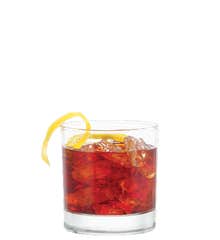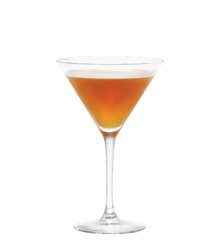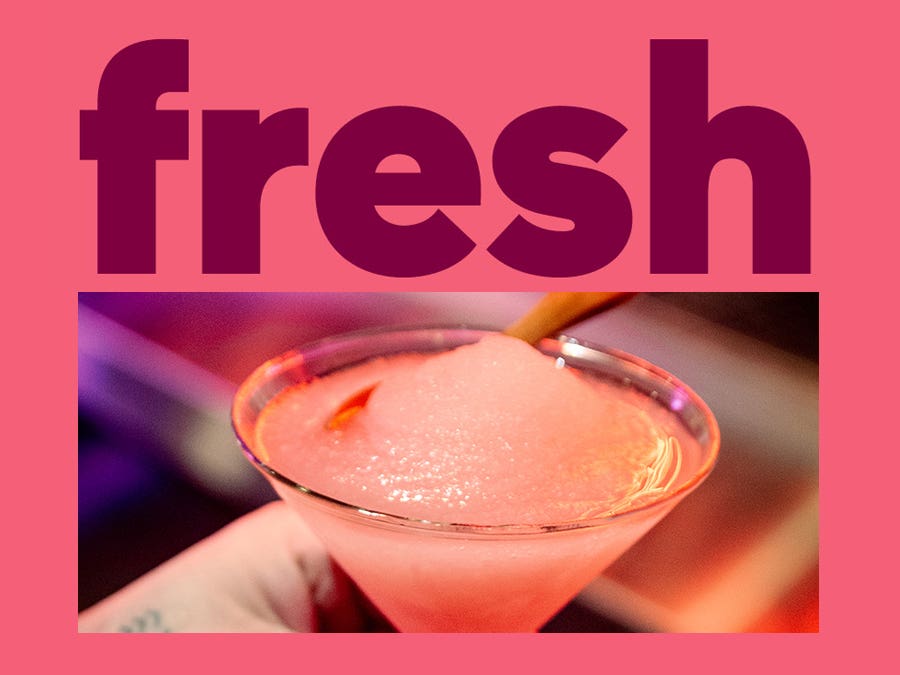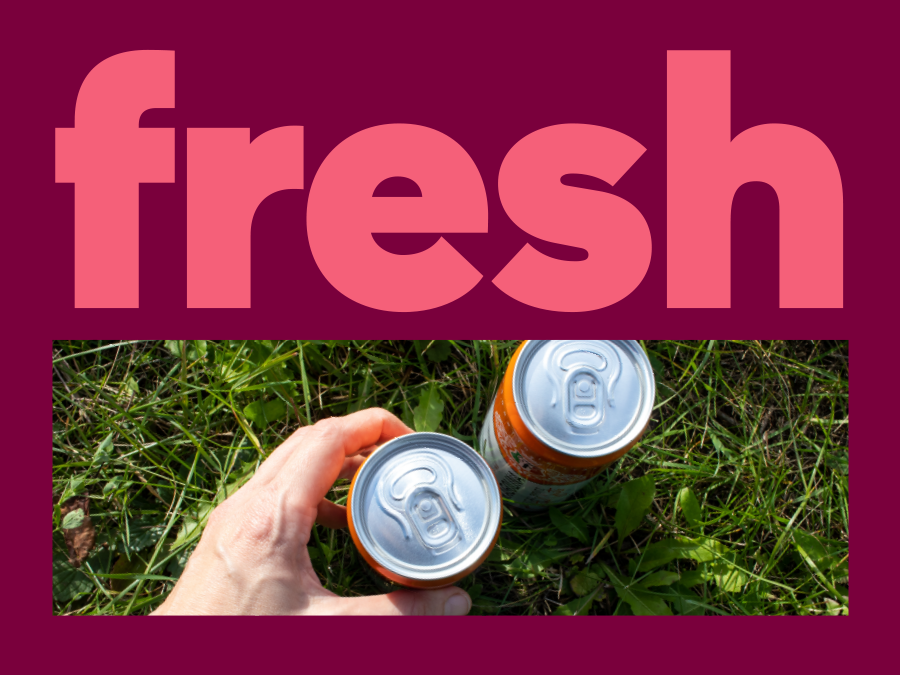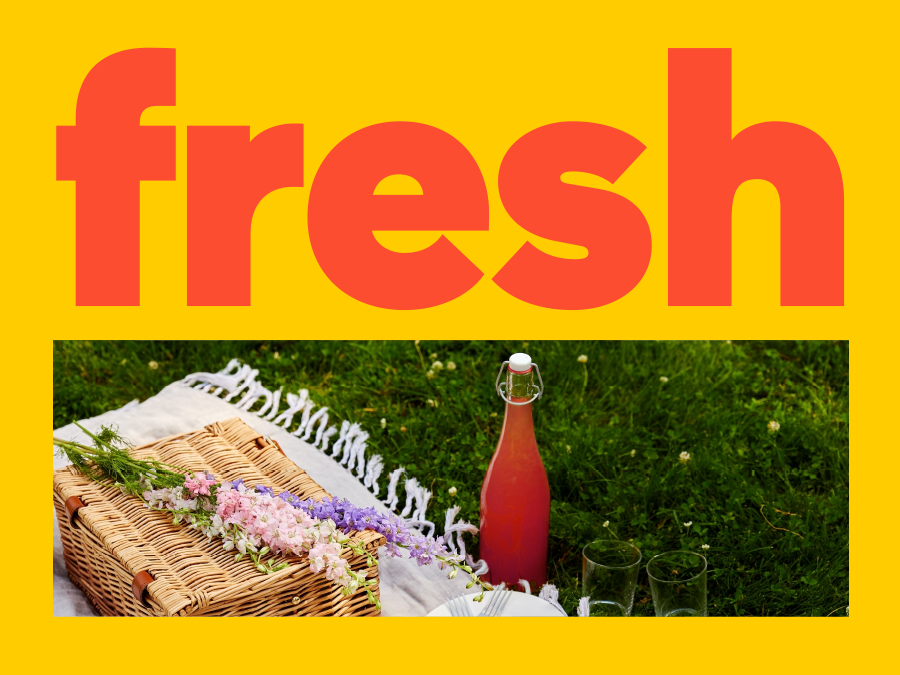Grace Honsberger-Grant grabbed a bottle of Italian white vermouth and poured some into a glass. “This one’s sweeter—it’s infused with all kinds of herbs, plus some orange zest. I like it with some soda,” said the mixologist. She then took a sip of a Spanish red vermouth. “This one has more tannins. Both are vermouth, but they taste completely different.”
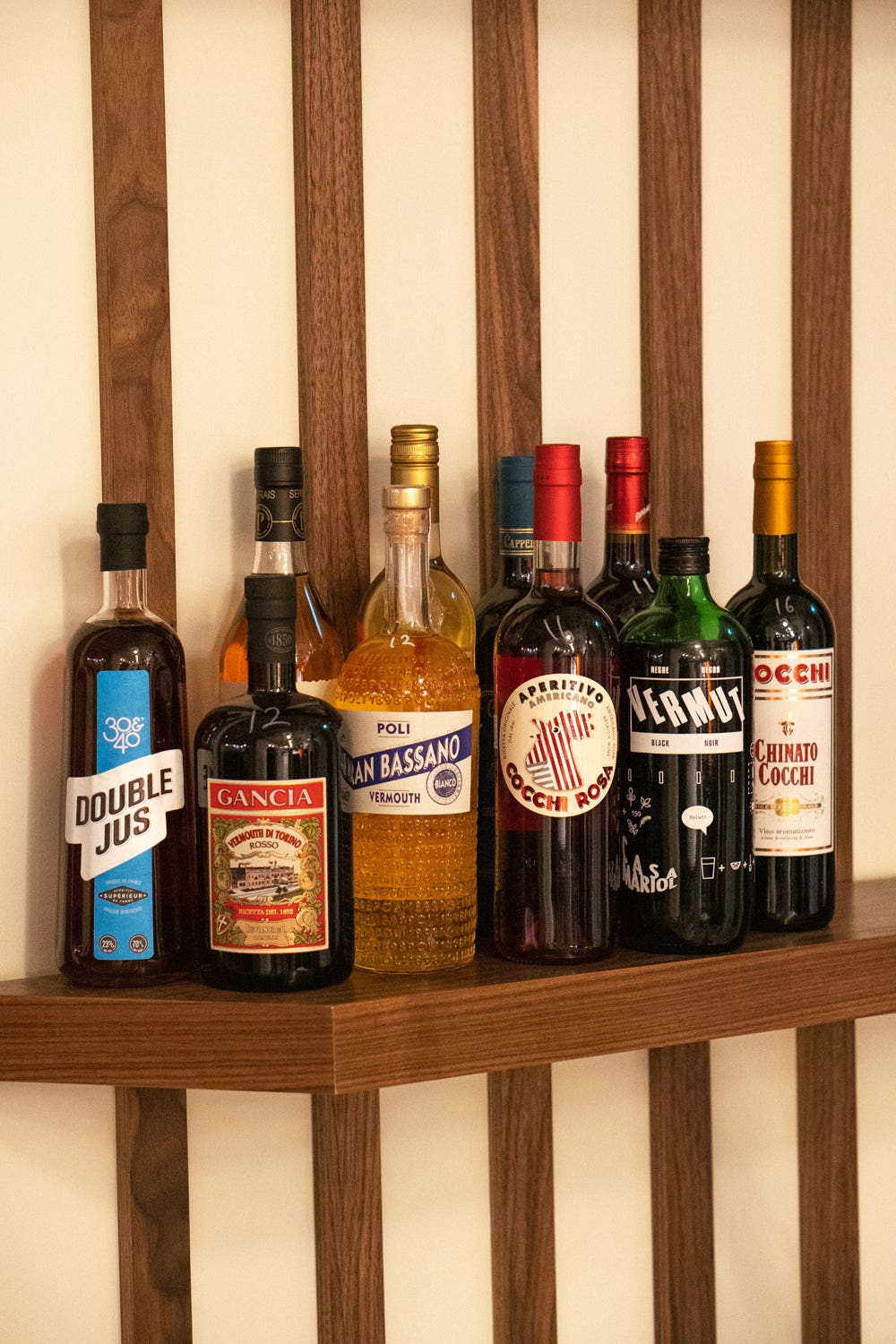

Like many others, Grace discovered vermouth through cocktails. “I had an Old Fashioned phase, then a martini phase. Now, I mostly drink vermouth straight,” said the manager of Bisou Bisou. This aperitif bar in Old Montreal specializes in fortified wine and offers a fabulous selection of sherry and vermouth served by the glass. You can have it straight, with soda or tonic water, or in one of their many cocktails, like the delicious Stoneflower that’s made with sherry, rosé vermouth and cherry syrup.
Grace explained that vermouth is wine that’s been fortified by adding neutral alcohol and is then infused with aromatics. To bear the name vermouth, it must contain absinthe—in fact, the bitter herb that absinthe is made from is called wermut in German—and its alcohol content must be between 14.5% and 22%. Beyond that, anything goes, which explains the wide variety of vermouth. It can be dry or sweet; fruity or herbaceous; white, rosé or red—it can even be made from cider or mead. Grace believes that such a broad range of options has contributed to the aperitif’s surge in popularity.
“ Vermouth is more affordable and accessible than other types of alcohol. And it’s great for when you want a cocktail that’s not so strong.”
— Grace Honsberger-Grant, mixologist and manager of Bisou Bisou
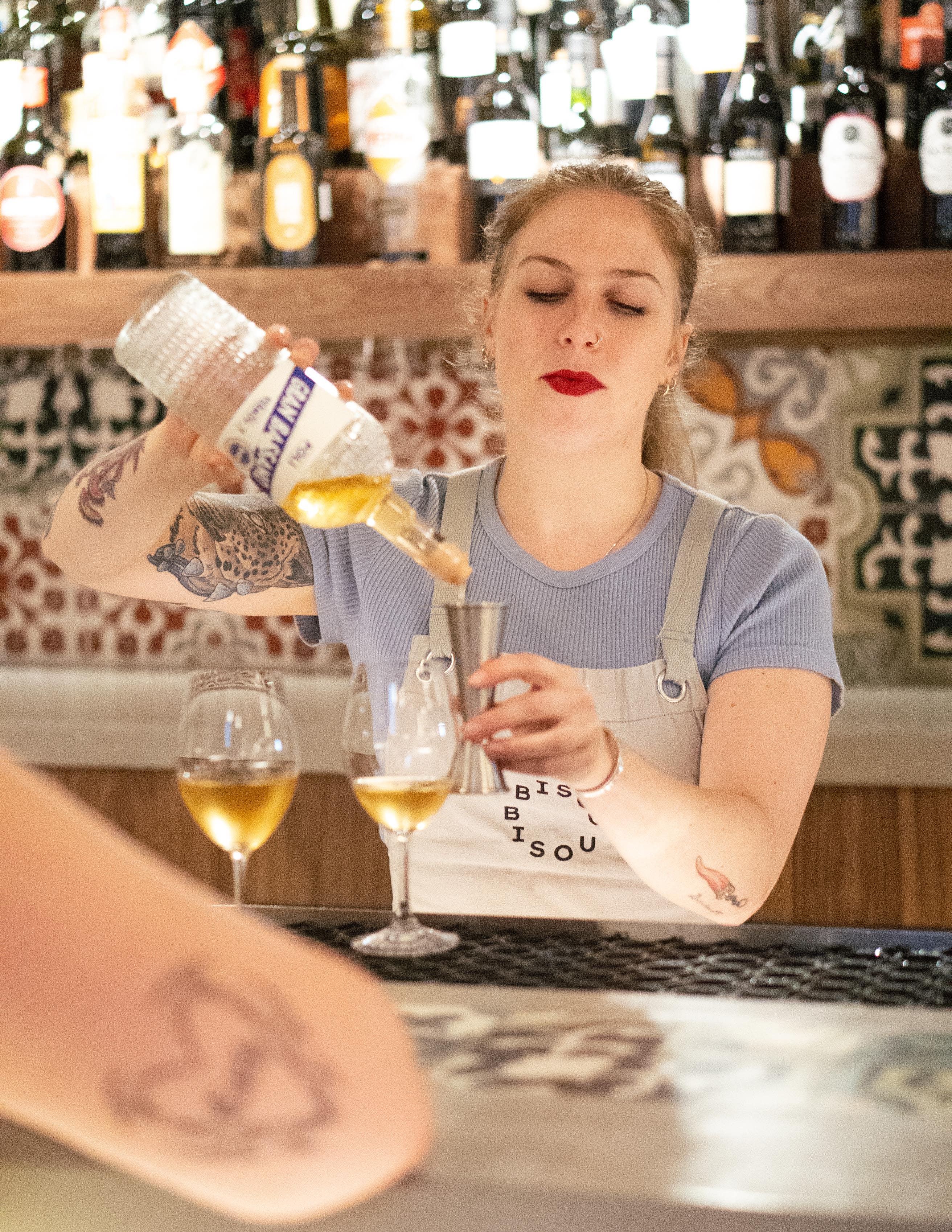

The first local vermouth
“My greatest wish is to drink a martini made entirely in Quebec!” That’s what mixologist Gabrielle Panaccio exclaimed one fine day in December during a visit to the Val Caudalies vineyard in Dunham, in the Eastern Townships. Co-owner Guillaume Leroux has a clear memory of this meeting. It was back in 2014, at a time when the first Quebec gins were popping up on SAQ shelves. Gabrielle and her associate, Fabien Maillard—who, at the time, were co-owners of Le Lab cocktail bar—were lamenting the fact that there was no Quebec-produced vermouth. “I didn’t know anything about vermouth back then, beside the fact that my grandmother drank Cinzano and my dad poured a bottle of Martini Rosso into his Christmas punch bowl!” said the winemaker with the laugh. Yet, he latched onto the idea of creating the first Quebec vermouth with the same fervour he had at age 25 when he and his friends, Alexis Perron and Julien Vaillancourt, came up with the crazy idea of opening their own vineyard.
The three amigos spent the following year working with Gabrielle and Fabien, tasting different kinds of vermouth and macerating hundreds of aromatics to develop their own recipe. Guillaume shared that it took some time to convince Julien, who’s in charge of the winemaking process for the vintages at Val Caudalies, because “he thought it sacrilegious to add all these flavourings to his white wine!” Yet, they all banded together and produced a German-style sweet vermouth with lemon and orange zest, as well as 15 other aromatics like coriander, juniper berries, camomile, cardamom, cinnamon, and cubeb pepper—and, of course, absinthe and Gentian root, which adds a touch of bitterness.
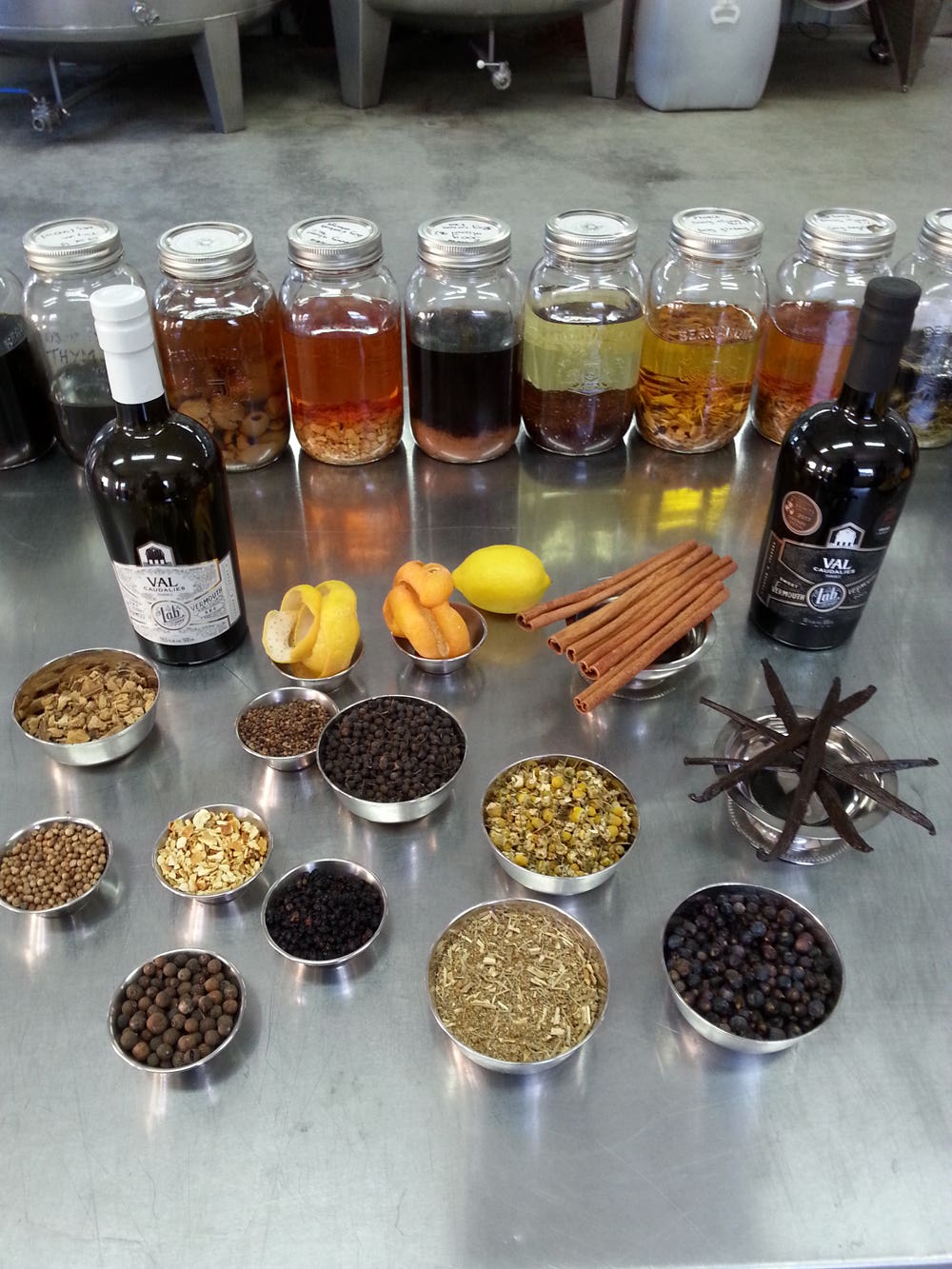

The secret is in the aromatics
Guillaume was on to something—the first 1,000 bottles of their sweet vermouth sold out in less than 2 weeks. To allow Gabrielle to enjoy a martini made with all Quebec ingredients, the partners then got to work on a dry vermouth flavoured with olives, pineapple and allspice, among other things, and that contains less residual sugar than its sweet counterpart. The group’s creations allowed Val Caudalies to take home not one, but two prizes at the prestigious San Francisco World Spirits Competition in 2020, where they won gold and silver for their sweet and dry vermouth.
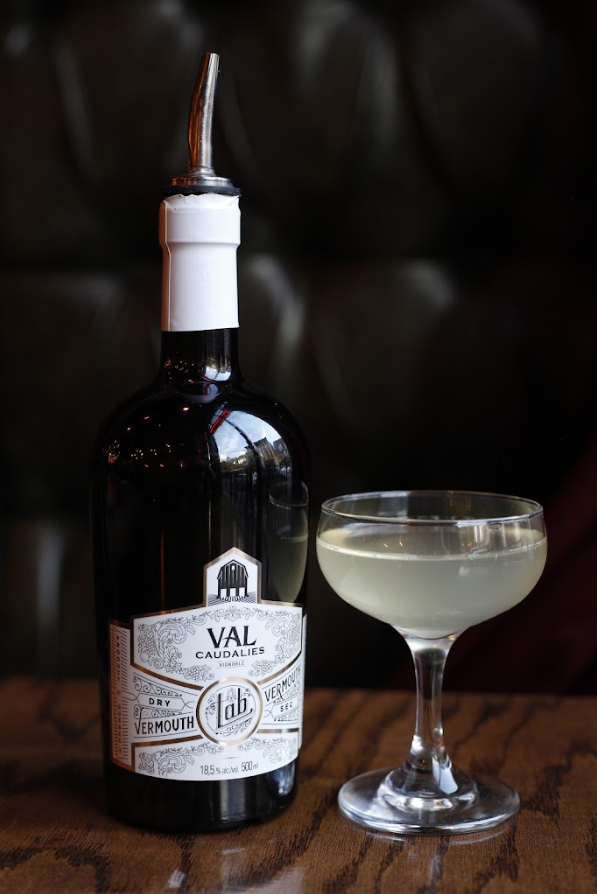

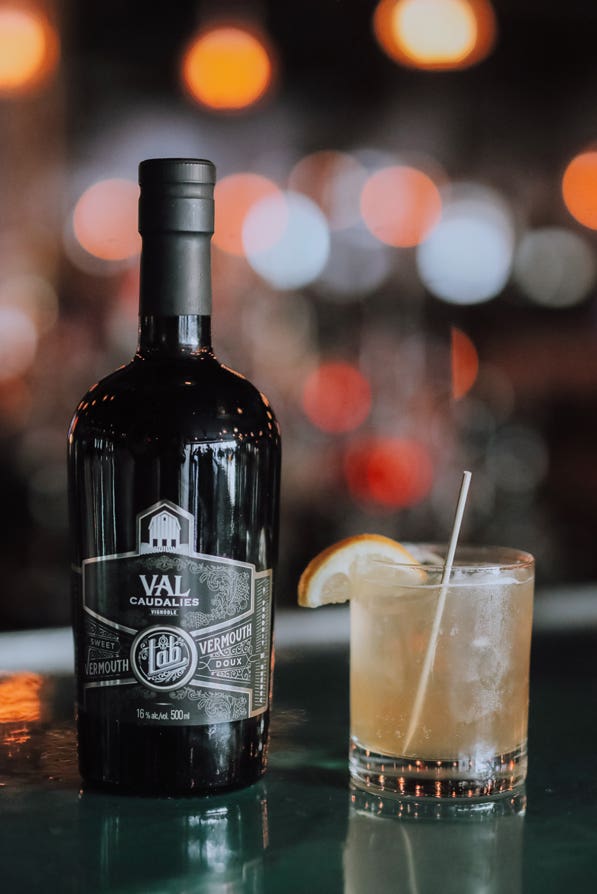



“Making vermouth isn’t hard. What’s hard is making a good vermouth. We were lucky enough to stumble upon the right recipe on our first try!”
— Guillaume Leroux, co-owner Val Caudalies winery
Along with Julien and Alexis, he’s spent the last few months developing a new recipe for a red vermouth “that has orange zest as well, but features more tannins.” Guillaume hopes that the first batch will be ready in time for the holidays. He also made a point of mentioning that Julien is now a true vermouth aficionado. “He loves it and says that his idea was brilliant!”
Cocktails made with red vermouth
Cocktails made with white vermouth
Other "Fresh" articles
-
Read more
Cosmopolitans, Margaritas, Appletinis, Sex on the Beach—these sweet, colourful cocktails were all the rage at the end of the last millennium, and they’re totally in again! For the latest edition of Fresh, we’ll take a little trip back in time with two mixologists… who grew up in the 1990s!
-
Read more
Are we seeing the end of glass bottles? It started with beer, then ready-to-drink cocktails—now, wine is starting to appear in aluminum cans, too. Are we ready to go all in on this new trend? We spoke about it with two experts for this edition of Fresh!
-
Read more
Do you know piquette? In French, the term has often been used to mean plonk or poor quality wine, but it’s actually a slightly tart, low-alcohol drink that’s been gaining popularity in the past few years. We look at the phenomenon in the latest edition of Fresh!
 Access to SAQ Inspire personalized services and store inventories are unavailable at the moment.
Access to SAQ Inspire personalized services and store inventories are unavailable at the moment. Free in-store delivery with purchases of $75+ in an estimated 3 to 5 business days.
Free in-store delivery with purchases of $75+ in an estimated 3 to 5 business days. 

